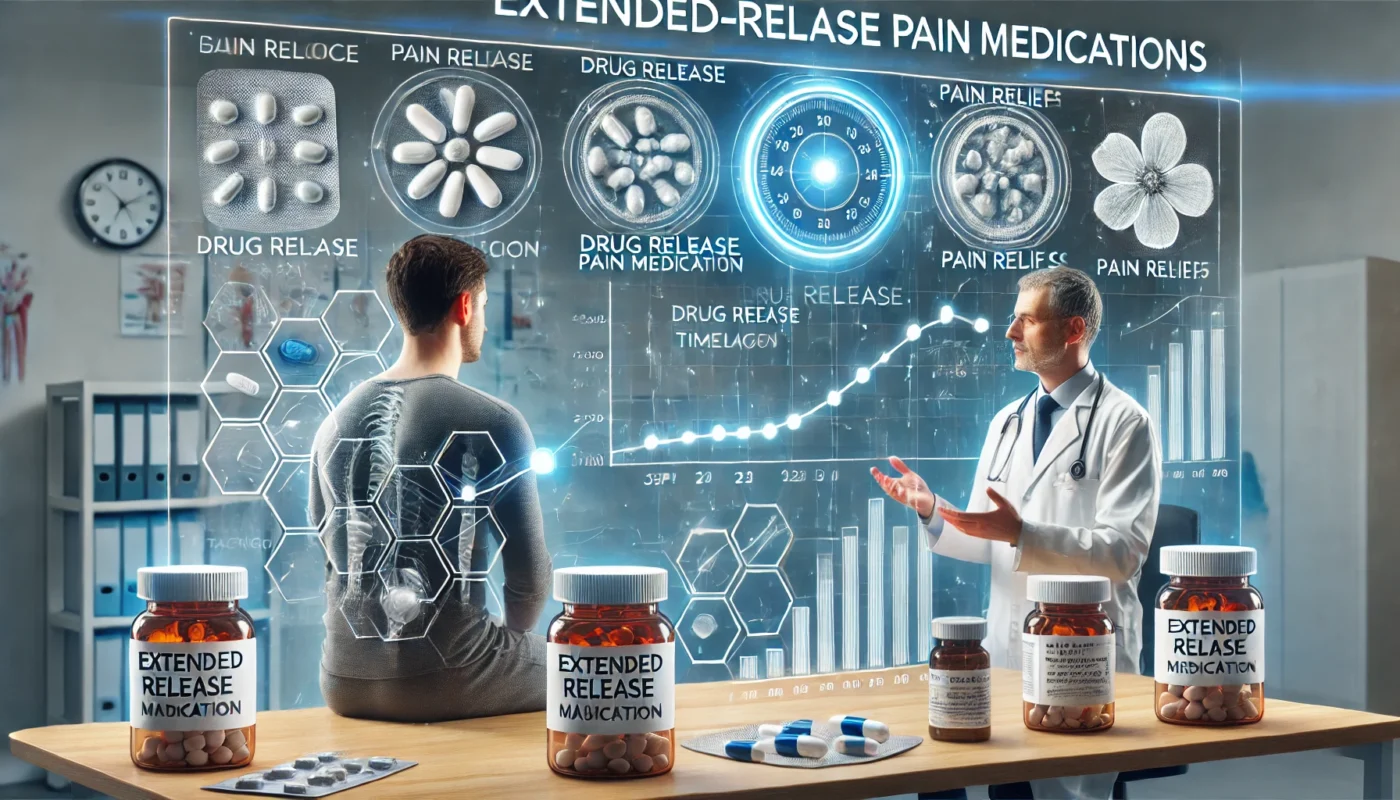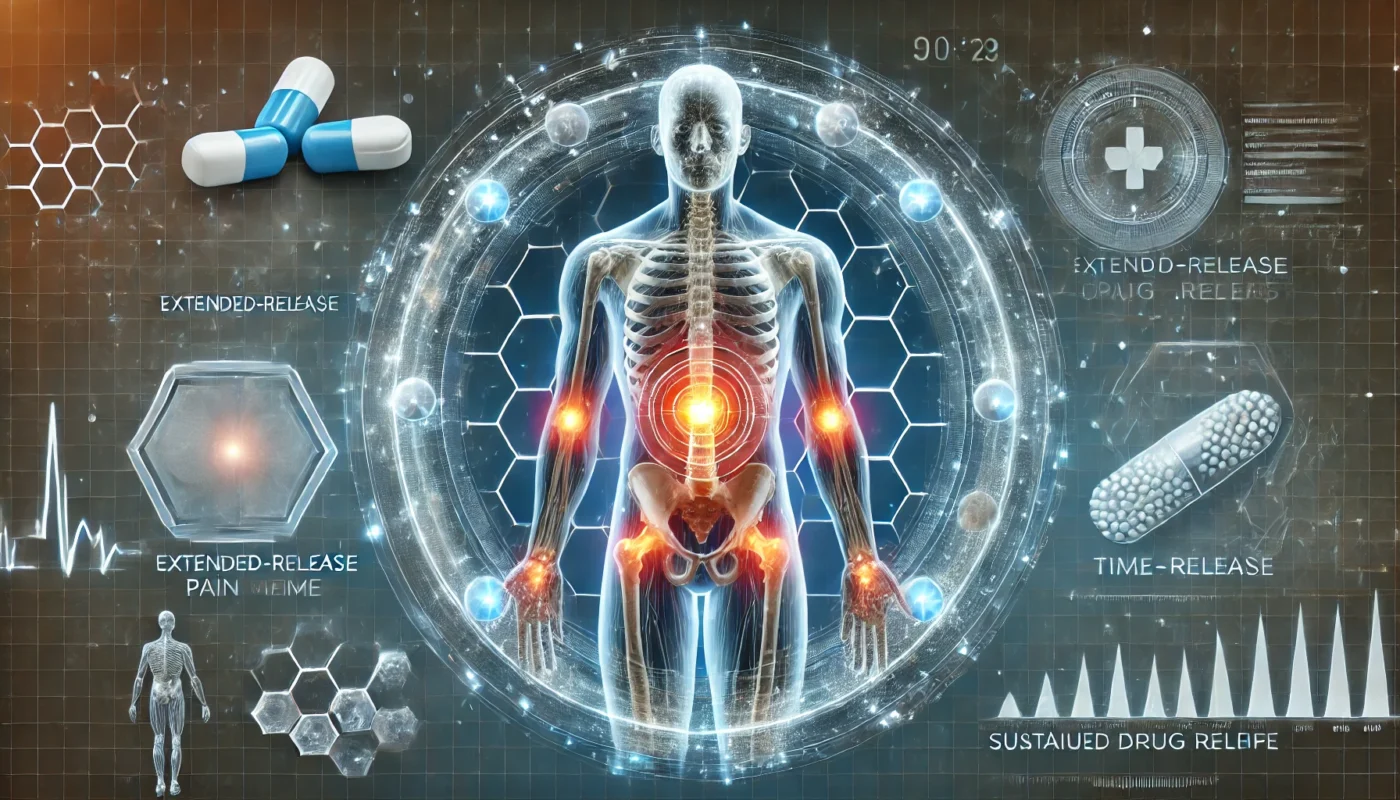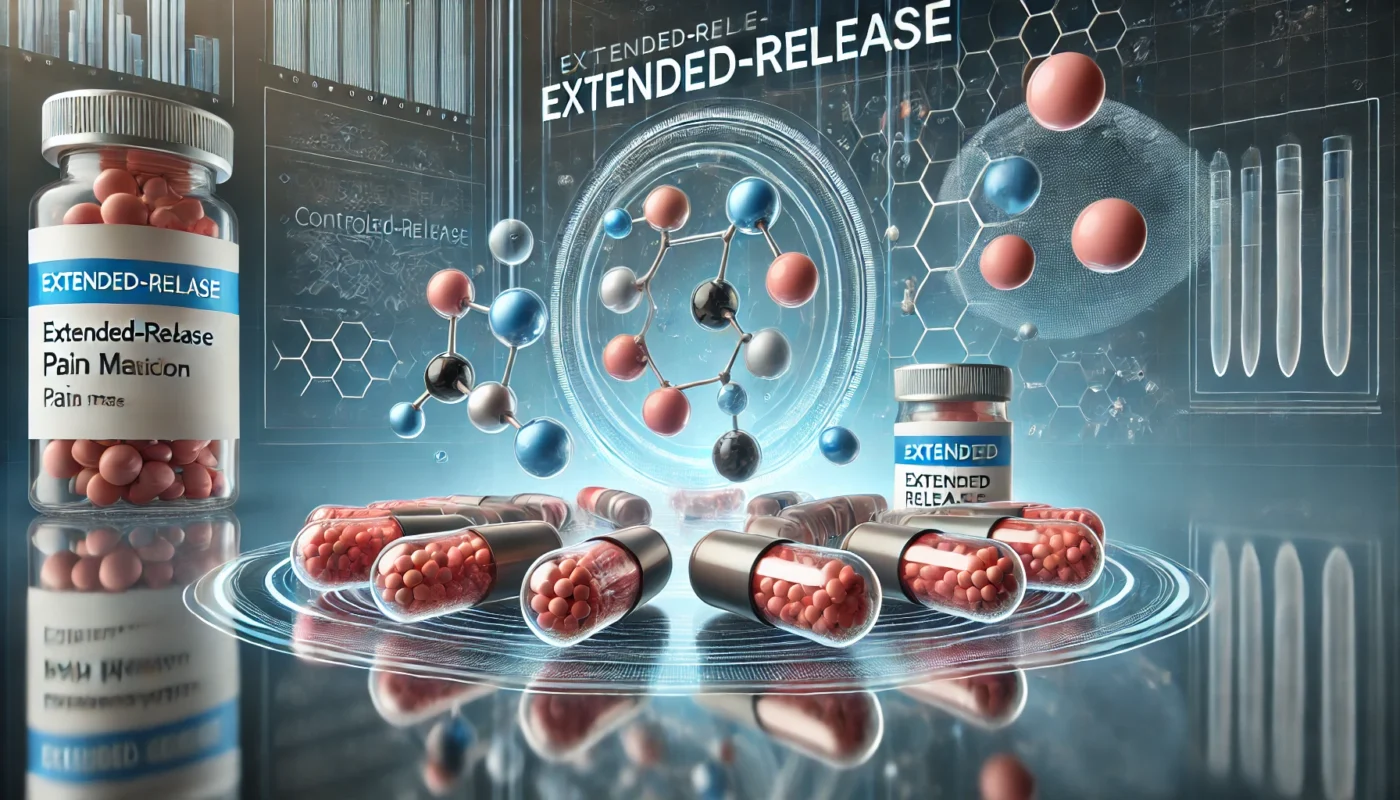Extended release pain medications, also known as ER pain meds, are designed to release their active ingredients slowly over time. This allows for sustained pain relief with fewer doses compared to immediate-release formulations. These medications are commonly used in managing chronic pain conditions, such as arthritis or cancer pain, where continuous pain control is necessary.
You may also like: Understanding Long-Term Pain Relief Options
The Mechanism of Action
At the core of extended release formulations is their unique mechanism of action. Unlike immediate-release medications that deliver a rapid surge of the drug, ER formulations use sophisticated delivery systems. These systems, such as polymer matrices or osmotic pumps, regulate how the drug is released into the bloodstream, ensuring a more gradual, steady delivery.
Benefits Over Immediate Release
One of the standout benefits of ER medications is the reduction in dosing frequency. Patients benefit from fewer doses throughout the day, leading to improved adherence to medication regimens. With immediate-release medications, the need for frequent dosing can be burdensome, often resulting in missed doses and fluctuating pain control.
Common Conditions Treated
ER pain medications are versatile and are used to treat a variety of conditions. Apart from chronic pain conditions like arthritis and cancer pain, they are beneficial for conditions that require stable pain control such as fibromyalgia and neuropathic pain. Their ability to provide stable plasma concentrations makes them a preferred choice for long-term management.
How Do They Work?
The technology behind extended release pain medications involves complex delivery systems that control the rate of drug release. These systems can include special coatings, matrices, or capsules that dissolve at a controlled rate. This ensures that the medication is released gradually, maintaining a therapeutic effect over an extended period without frequent dosing.
Delivery System Innovations
ER medications owe their efficacy to innovations in pharmaceutical technology. Coatings and encapsulations are meticulously engineered to respond to physiological conditions, such as pH levels in the gastrointestinal tract, to release the drug at a specific rate. This precise control is crucial for maintaining drug concentrations within a therapeutic window.
Sustained Blood Levels
One of the key objectives of ER formulations is to maintain sustained drug levels in the bloodstream. By avoiding the peaks and troughs of drug concentrations, these medications help in preventing the breakthrough pain that can occur with immediate-release forms. This stability is particularly important in conditions where consistent pain management is critical.

Patient-Centric Design
ER medications are designed with the patient’s lifestyle in mind. The reduced frequency of dosing not only enhances adherence but also aligns with the patient’s daily activities. This patient-centric approach helps in integrating pain management seamlessly into daily routines, reducing the impact of pain on overall quality of life.
Types of Extended Release Pain Medications
Extended release formulations are available for various opioids and non-opioid pain relievers. Here’s a look at some common examples:
Extended Release Opioids
- Long Acting Morphine: This is a staple in chronic pain management, offering steady pain control without the peaks and troughs associated with immediate-release forms. Its long duration of action makes it a reliable choice for patients needing continuous pain relief.
- Extended Release Oxycodone: Popular for its efficacy in severe pain, long acting oxycodone provides continuous pain relief, crucial for maintaining a stable level of comfort. It is often used in situations where other pain relievers have proven insufficient.
- Long Acting Narcotics: These include medications like fentanyl patches, which deliver a controlled dose of medication over several days. The transdermal system provides a consistent release, making it suitable for patients with difficulty swallowing or gastrointestinal issues.
Non-Opioid Options
While opioids are the most well-known ER pain medications, non-opioid options are gaining traction. Drugs such as gabapentin and certain NSAIDs are available in extended release forms, offering alternatives for those who wish to avoid opioids.
ER NSAIDs
Nonsteroidal anti-inflammatory drugs (NSAIDs) like naproxen and ibuprofen have ER versions that provide prolonged anti-inflammatory effects. These are particularly useful in managing conditions with inflammatory components, such as arthritis, while minimizing gastrointestinal side effects.
Gabapentin and Other Anticonvulsants
Gabapentin, originally an anticonvulsant, is used in an extended release form to manage neuropathic pain. It helps reduce nerve pain by stabilizing electrical activity in the brain, offering a non-opioid option for chronic pain management.
Muscle Relaxants and Antidepressants
Some muscle relaxants and antidepressants are available in ER formulations, addressing pain and associated symptoms like muscle spasms and depression. These medications offer a dual approach to pain management by tackling both physical and emotional aspects of chronic pain.
Benefits of Using Extended Release Pain Medications
The primary advantage of ER pain medications is their ability to maintain consistent pain relief. This can significantly improve the quality of life for individuals dealing with chronic pain. Other benefits include:
Reduced Dosing Frequency
ER formulations require less frequent dosing, which can improve patient compliance and convenience. Patients are more likely to adhere to a simpler regimen, leading to better overall pain control and fewer missed doses.
Stable Drug Levels
By releasing the drug slowly, ER medications help maintain stable blood levels, reducing the risk of side effects associated with peak concentrations. This consistent drug level is crucial in preventing the onset of breakthrough pain and associated discomfort.
Improved Sleep Quality
Chronic pain often disrupts sleep. Extended release pain killers provide overnight relief, contributing to better sleep quality. A good night’s sleep can enhance recovery, improve mood, and boost overall health, making ER formulations a valuable tool in holistic pain management.
Enhanced Quality of Life
By providing sustained pain relief, ER medications allow individuals to engage more fully in daily activities. This improved functionality can lead to better physical health, emotional well-being, and an overall enhanced quality of life.

Considerations and Risks
Despite their benefits, ER pain medications come with potential risks and considerations. It’s crucial to use these medications as prescribed and under the guidance of a healthcare provider. Here are some key points to consider:
Risk of Dependency and Abuse
Extended release opioids carry a risk of dependency and abuse, similar to their immediate-release counterparts. It’s essential for patients and healthcare providers to monitor for signs of misuse. Proper education on the risks associated with opioid use is a critical component of any pain management plan.
Potential Side Effects
Common side effects of ER pain medications include nausea, constipation, drowsiness, and dizziness. These effects can often be managed with adjustments in dosing or additional supportive therapies. It’s important for patients to communicate any side effects to their healthcare provider promptly.
Interactions with Other Medications
ER pain meds can interact with other medications, potentially altering their effects. It’s important to discuss all medications with a healthcare provider to avoid adverse interactions. This includes over-the-counter drugs, supplements, and herbal remedies, as they can also influence the effectiveness of ER medications.
Individual Variability
The effectiveness and tolerability of ER pain medications can vary from person to person. Factors such as age, weight, metabolic rate, and the presence of other medical conditions can influence how these drugs work. Personalized pain management plans are essential to address these individual differences.
Practical Tips for Patients
Understanding how to effectively use ER pain medications can enhance their benefits and reduce risks. Here are some practical tips:
Follow the Prescribed Regimen
Adhering to the prescribed dosing schedule is crucial for maintaining consistent pain relief and minimizing side effects. Skipping doses or taking additional doses can disrupt the steady-state drug levels, leading to suboptimal pain control or increased side effects.
Communicate with Your Healthcare Provider
Regular communication with your healthcare provider can help in adjusting doses and managing any side effects or concerns. Open dialogue is key to optimizing your treatment plan and ensuring that it continues to meet your pain management needs.
Explore Holistic Approaches
Complementing medication with holistic approaches such as physical therapy, acupuncture, or mindfulness can enhance pain management. These methods can address the psychological and physical aspects of pain, providing a more comprehensive approach to treatment.
Monitor and Report Side Effects
Being vigilant about any side effects and reporting them to your healthcare provider can prevent complications. Adjustments in medication or the addition of supportive treatments can often mitigate unwanted effects, ensuring a more comfortable treatment experience.
Conclusion
Extended release pain medications are a cornerstone in the management of chronic and severe pain. Their ability to provide sustained relief makes them invaluable for many patients. However, their use requires careful consideration and collaboration with healthcare providers to ensure safety and efficacy. By understanding how these medications work and integrating them with a holistic approach to health, patients can optimize their pain management strategies and improve their overall wellbeing.

Incorporating ER medications into a broader pain management plan can help patients lead more fulfilling lives. As research and technology continue to advance, the options available for effective pain management will only expand, offering hope and relief to those in need.
Further Reading:
Pain Pills/Opioids Frequently Asked Questions
List of Extended-Release and Long-Acting Opioid Products Required to Have an Opioid REMS
Extended Release Pain Medications, Chronic Pain Management, Opioids, Non-Opioid Pain Relievers, Pain Relief, Drug Delivery Systems, Patient-Centric Design, Pain Management Strategies, Side Effects of Pain Medications, Dependency and Abuse Risks, Holistic Pain Management, Innovations in Pharmaceuticals, Quality of Life, Neuropathic Pain, Arthritis Treatment, Cancer Pain Management, ER Formulations, Anticonvulsants, NSAIDs, Muscle Relaxants, Antidepressants
Important Note: The information contained in this article is for general informational purposes only, and should not be construed as health or medical advice, nor is it intended to diagnose, prevent, treat, or cure any disease or health condition. Before embarking on any diet, fitness regimen, or program of nutritional supplementation, it is advisable to consult your healthcare professional in order to determine its safety and probable efficacy in terms of your individual state of health.
Regarding Nutritional Supplements Or Other Non-Prescription Health Products: If any nutritional supplements or other non-prescription health products are mentioned in the foregoing article, any claims or statements made about them have not been evaluated by the U.S. Food and Drug Administration, and such nutritional supplements or other health products are not intended to diagnose, treat, cure, or prevent any disease.

